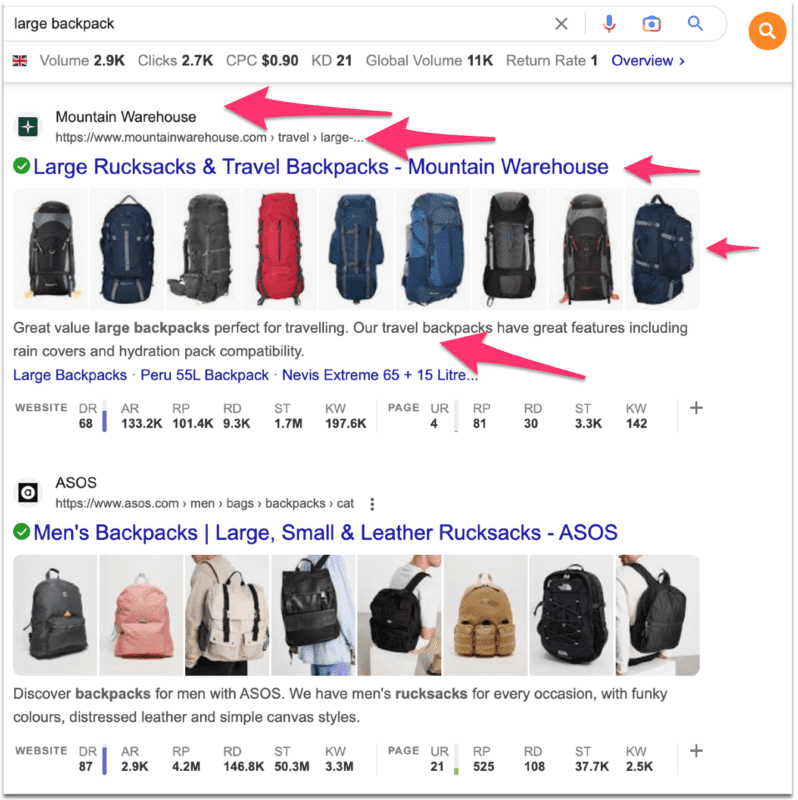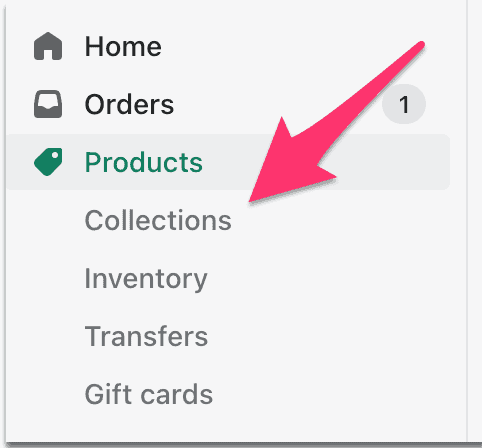Last updated on 3rd October 2023 at 19:04 by Alex Nicholas
Search engine optimisation (SEO) is a crucial aspect of e-commerce, as it helps to increase visibility and drive traffic to your website, and although meta descriptions (or meta tags as they’re also known) aren’t a direct ranking factor they are still one of the key components of optimising your page because they can entice a click from the SERPs through to your page.
And the reason I say meta descriptions aren’t a direct ranking factor is because there’s a possibility that what happens after a user clicks through to your Shopify store is measured by Google and is a ranking factor.
This, in my opinion, is especially true for eCommerce sites because if enough people click through to your site, aren’t happy with the result then bounce back to the SERPs, it could serve as a signal to Google that your collection page sucks, which could mean that your page might get demoted.
(Check out my detailed Shopify review to understand why I believe it’s such a great eCommerce platform and why I recommend it.)
What is a Shopify meta description?
Meta descriptions are brief summaries of the content on a given page that appear on the search engine results page below the brand name, the URL and the images (if there are any) of a website – after someone has entered a query.
These “summaries” should be added to each of your Shopify store’s pages to give context to a page when it shows up in the search engine results pages.
To understand why they’re important, let’s take a look at the image below.

There are 5 things that I’ve highlighted in this image that you need to pay attention to in what is a small area of SERP real estate.
- The brand
- The URL
- The page title that clearly describes the page
- Images that will be found on the page when you click through to the site
- The meta description
All 5 of these highlighted points play an important part in SEO because apart from the meta description they’re direct ranking factors that will make a difference to your site’s organic visibility.
But seeing as we’re focusing on optimising just the meta description in this post, here are the 2 things that you absolutely must focus on:
- Content that will entice a searcher to click on your page
- Your main keywords and a closely related search term
The image above clearly shows that both of these two points have been covered well by Mountain Warehouse because they give you a “reason to click” by letting you know what their products are good for and some basic features, plus they also use the main search term “large backpack” which has been bolded by Google so that it stands out.
In my opinion, by adding a thoughtful meta description you’re in some ways giving a potential customer a unique selling proposition and a call to action.
How to add content to your Shopify collection page meta description
To add content to your meta description follow these 4 simple steps:
Step 1: From your Shopify dashboard click on the collections button underneath the products.

Step 2: Select the collection page you want to add a meta description to.
Step 3: Go down to the bottom of the page and click the “edit” button.

Step 4: Add your description and press save

How should I write the meta tags?
As I mentioned above, there are two things you must focus on when writing your Shopify meta description if you want to stand out.
Firstly, make sure you give browsers a reason to click on your page, which could mean writing about anything from free shipping to unique features that set your products apart from your competitors.
Secondly, make sure you add your main keywords because Google will bold them in the SERPs which will draw a browser’s eye to those keywords and will make them more likely to click on your link.
I also highly recommend that you use a closely related keyword, too, because it’s very likely that Google also bold that closely related keyword and make it bold so that it stands out, too.
What happens if I don’t write a meta description?
If you don’t write a meta description for your collection page Google will simply write it for you by pulling content from your page to show in the SERPs. What they don’t do is leave it completely blank.
The downside to leaving it up to Google to write them is that it’ll always be an incoherent bag of words that doesn’t make any sense.
So my advice is to take 2 minutes to write a thoughtful description that describes the page and uses your main keywords and a related keyword.
Why are Shopify collection pages important?
When it comes to e-commerce, collection pages are arguably the most crucial part of your website because these pages group similar products together, making it easy for customers to filter, browse and find what they’re looking for.
However, collection pages aren’t just important to users, they also play a significant role in SEO because Google prefers to show them above product pages for the very reason I’ve just mentioned, they give users a better browsing experience due to the number of products to choose from.
By optimising these pages, including the meta descriptions, you can increase visibility and drive more traffic to your site.
Google is a “meta” search engine so the metadata in the collection description provides context to your page.